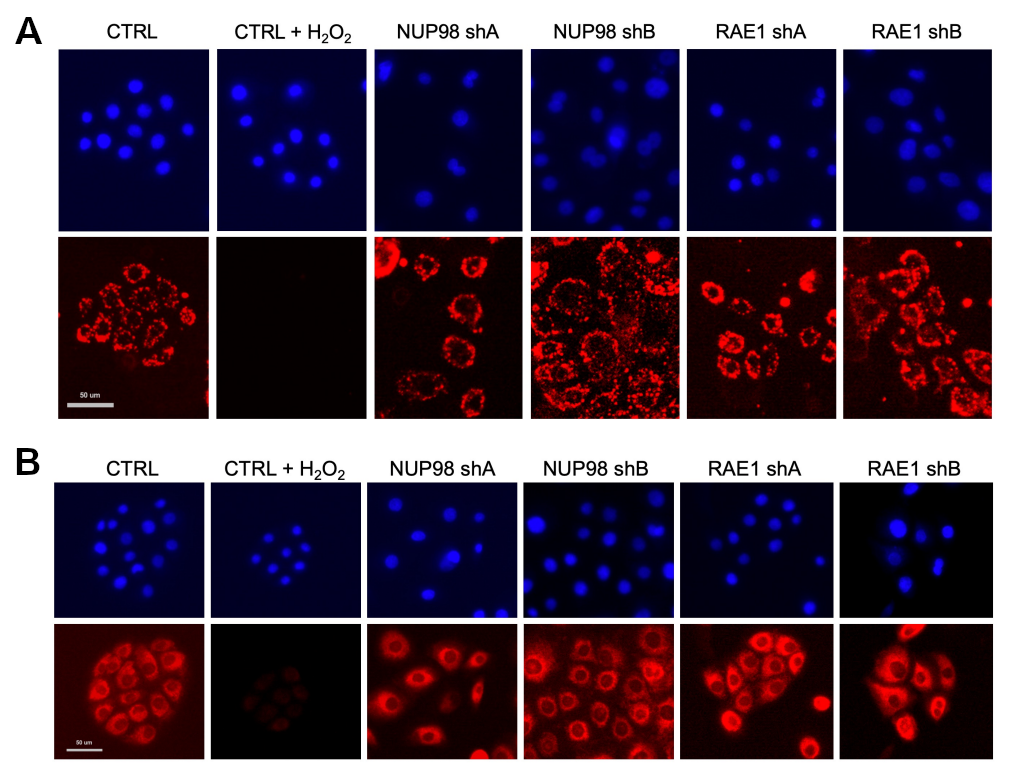Content #1
Content #1
Content #1
Humans are estimated to turn over approximately 330 billion cells daily, and self-renewing tissues rely on progenitor cells to support continuous regeneration. As such, the maintenance of progenitor function is essential for supporting tissue regeneration. The gene regulatory network maintaining progenitor function still needs to be understood. Emerging evidence suggests nucleoporins (NUPs) are multi-functional proteins that participate in cellular activities such as chromatin binding and transcription regulation that influence progenitor maintenance.
In a recent paper in Nature Communications, Neely et al. studied the role of two NUPs, NUP98 and RAE1, in regulating epidermal progenitor self-renewal and differentiation. NUP98 and RAE1 are highly expressed in the progenitor state and downregulated during keratinocyte differentiation, and their knockdown impairs progenitor regenerative capacity. The authors first demonstrated that NUP98 and RAE1 colocalize to form a complex in the nucleoplasm and that NUP98 binds to chromatin in a Histone Deacetylase (HDAC)-dependent manner. They also demonstrate that NUP98 and RAE1 enrichment in keratinocytes is essential for sustaining proliferation and repressing differentiation in the progenitor cells. To determine if NUP98 or RAE1 knockdown triggered apoptosis, the authors used Aquaphile™ JC-1 and MitoView™ 633 to monitor mitochondrial potential in WT, H2O2 treated WT, NUP98, and RAE1 knockdown and nontargeting NUP98 and RAE1 knockdown cells. The knockdown cells retained mitochondrial staining, suggesting that these two NUPs’ knockdowns do not trigger apoptosis. The authors further identified that NUP98, RAE1, and HDAC influence the expression of several critical regulators of progenitor maintenance, such as DMNT1, and the nucleolar localization of NUP98 and RAE1 induced by HDAC inhibition. The data suggest that this localization is likely to influence ribosomal biogenesis and export.
The demonstration that HDAC impacts wild-type NUP98’s role in epithelial progenitor maintenance will inform future work to understand how NUP98 functions in normal tissue homeostasis and its differences from the NUP98 oncogenic fusions. This understanding will better inform therapeutic strategies that use HDAC inhibition in acute myeloid leukemia patients.

Figure: NUP98 or RAE1 knockdown does not trigger apoptosis. Representative images of keratinocytes with NUP98 or RAE1 knockdown as compared to non-targeting control knockdown stained with (A) Hoechst (top row) and Aquaphile™ JC-1 stain (bottom row) , or (B) Hoechst (top row) and MitoView™ 633 stain (bottom row) . Control knockdown keratinocytes treated with H2O2 were used as positive controls for apoptosis detection (scale bar =50µm). Credit: Modified from Neely et al https://doi.org/10.1038/s42003-023-05043-2 reproduced under CC BY 4.0 DEED.
Full Citation
Neely, A.E., Blumensaadt, L.A., Ho, P.J. et al. (2023) NUP98 and RAE1 sustain progenitor function through HDAC-dependent chromatin targeting to escape from nucleolar localization. Commun Biol 6, 664. https://doi.org/10.1038/s42003-023-05043-2